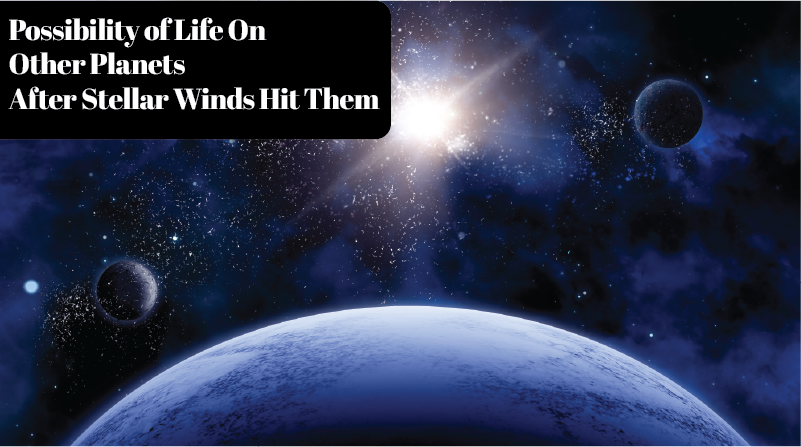The star happens to be a luminous ball of gas, mostly helium and hydrogen and its gravity is holding it at its place and shape. When the fuel burns out, the star must die and die. The outer layer explodes as a supernova, becoming a dwarf star (neutron star) or black hole.
A new study in astronomy led by the University of Warwick says that if any life is identified on the planets that orbit around the white dwarf stars, they might have evolved after its death. They also revealed the consequences of the intense and furious stellar winds that will hit a planet when its star is dying.
The Aftermath Of Stellar Winds
Astronomers are searching for the signs of life around the dead stars by observing the impact of the winds by the stars on the orbiting planets, especially when the star transits to the white dwarf stage. The study tells that unless the planet has an intensely strong magnetic field (magnetosphere) that can protect it from the worst effects, it is nearly impossible for life to survive the tumultuous stellar evolution.
In the case of the Earth, Solar system, the solar wind particles can destroy the protective layers of the atmosphere, guarding humans against harmful ultraviolet radiation. Since all planets do not have a magnetosphere, which deflects the particles away due to its magnetic field, Earth has this property due to an iron core at the center. The iron core rotates like a dynamo to create this magnetic field.
The Martian atmosphere has been destroyed due to the absence of a magnetosphere. Similarly, even the planets like Earth may become prey to solar winds in the future.
When the Sun reaches the red giant stage, the heat stretches to about tens of millions of km in diameter, eating up all inner planets, including Earth and the weaker gravitational pull. With the loss of mass in the star, the remaining planets move further away, the report by them says. They also observed the solar wind will be far stronger than anything and will fluctuate dramatically.
What Does The Future Hold?
Studies conducted showed that the winds from different types of stars with masses ranging the same as that of the Sun or seven times more show how the density, speed of the stellar wind, along with expanding planetary orbit, joins and alternatively shrink and expand the magnetosphere of the planet. For any planet to survive this phase without destruction, it is estimated that it should have a magnetic field 100 times stronger than Jupiter.
During stellar evolution, the habitable zone moves outward than orbiting the planet, putting a challenge to the survival of the existing life. The planet may also get shifted to another location due to this stellar evolution.
The planet’s magnetosphere had undergone different phases during its evolution. If the planet survives these extreme and sudden changes in the environment, life will develop during the white dwarf phase
It is possible that, since the white dwarf emits much less light than a Sun-like star and have no winds, the giant planets might have reached a remarkably close position after billions of years becoming a habitable zone giving rise to life to develop and survive



